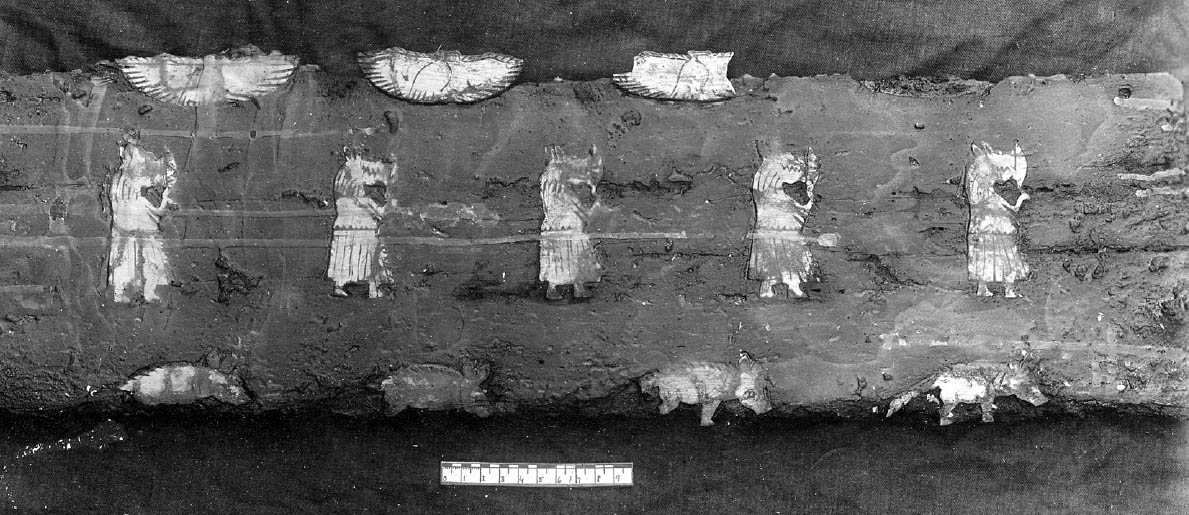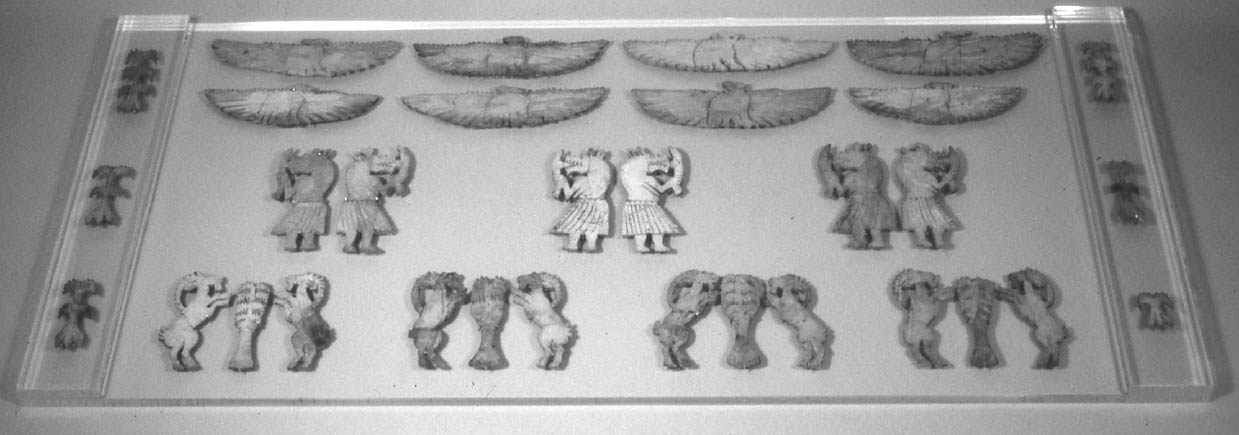THE ANCIENT EGYPTIAN COLLECTION AT THE MUSEUM OF FINE ARTS, BOSTON. PART 2, A REVIEW OF FORMER TREATMENTS AT THE MFA AND THEIR CONSEQUENCESSUSANNE G�NSICKE, PAMELA HATCHFIELD, ABIGAIL HYKIN, MARIE SVOBODA, & C. MEI-AN TSU
8 ORGANIC MATERIALS8.1 TREATMENTS AT THE MFA AND CURRENT APPROACHESShipping to the United States was equally perilous for other organic materials. Ostrich feather fans, for example, were damaged beyond salvage when wetted on board the steamer SS Clan Murdoch in passage from Port Said to New York. Inappropriate storage in Boston led to further losses of already fragile material. The lack of documentation previously mentioned is particularly true for organic materials. About 200 conservation records were found for review, but the majority of these are related to treatment of ivory inlays and recent exhibition activity. Reisner's excavations at Kerma, located along the trade route between Egypt and Sudan, opened burial tumuli with a wealth of organic materials including burial beds, leather clothes, cow skulls, and sacrificial offerings. The beds were often decorated with thin ivory inlays depicting African animals such as elephants, gazelles, and lions, as well as mythological creatures such as winged giraffes and divinities. Elephant and hippo ivory were the materials used for these carvings. In 1993, a long-term loan to the Dallas Museum of Art required the re-treatment of a group of inlays consisting of eight vultures, six Tawerets (knife-wielding hippopotamus goddesses), four groups of goats and trees, and six plant images from tomb K 439 at Kerma (Reisner 1923). As was the case with many other finds, these had been consolidated with wax in the field (fig. 19). The inlays were broken into many small fragments, some almost dark brown due to wax staining, and the surfaces were caked with soil. Some were delaminating in multiple layers and were extremely fragile (fig. 20), most likely a result of water damage, while others Other conservation materials used in the past for treatment of organics include hide glue, mucilage, gelatin, cellulose nitrate, and PVACs; often surfaces were cleaned with Calgon solutions. A mixture of Elmer's Glue-All and plaster (25:75) was mentioned as a fill material for ivory. Obviously some of these materials may cause damage to soft and friable substrates and are extremely difficult to reverse. Current treatment approaches favor minimal intervention and focus on preventing damage. Loose linen wrappings on mummies, for example, are being secured or enveloped with custom-dyed crepeline; single threads are sometimes used to tie loose elements into place (Leveque 1987). BEVA D8 and BEVA 371 were used to heat-tack loose crepeline membranes or sometimes to connect linen, but today acrylic resins such as Paraloid B-72 are favored for such treatments. Fibrous plant materials are mostly consolidated with cellulose ethers. Supports of joins or fragile areas consist of Hollytex or various types of tissue paper. In addition, objects or object groups are frequently mounted in a way that minimizes handling. Supports can range, according to material and shape of the object, from form-fitted epoxy shapes, covered with soft materials such as Volara or polyethylene felt, to Plexiglas with appropriate cushioning layers, or carved Ethafoam forms covered with fabric or inert materials. Such mounts support fragile materials and allow their display, transport, and storage on the same mount.
Medical studies of MFA mummies in regard to age, gender, and diseases using radiographic examination date back to the 1930s, when collaborative efforts with local hospitals were carried out. In the years leading up to Mummies and Magic, many of the museum's mummies were examined by CAT-scanning (D'Auria et al. 1988). Not only was medical information retrieved, but also the location of amulets and other jewelry in the mummy wrappings, in a non-destructive way. Over the last decade, increasingly sophisticated analytical methods have led to a growing database of identified organic compounds (Newman and Serpico 2000; Serpico 2000; Serpico and White 2000). These can be found as stains or accretions, or as traces in vessels, as for example fatty residues in Egyptian cosmetic vessels (Newman 1998). In the past these were often seen as distracting and would have been removed, whereas today cleaning is approached with heightened sensitivity. The change in approach can be illustrated by considering an earlier treatment of the cartonnage of Tabes (MFA 72.4833), dating to the early 22d Dynasty. The inscription identifies the occupant as the songstress Amen Tabes, wife of the barber of the estate of Amen Nesptah, and the cartonnage may have come from Thebes (D'Auria et al. 1988). As can be seen in a 1909 photograph (see fig. 12; the fifth mummy case from the left), the surface was covered with an opaque black substance, a libation material applied during a burial ritual. While the remnants of the libation material from this coffin have not been analyzed to date, such black substances on two other MFA coffins have been found to consist of animal fat or vegetable oils. The original color is unknown, but it is likely that this layer darkened and turned completely opaque over time, yet its presence is integral to the purpose and history of the artifact. For the modern observer, the intriguingly colorful and informative underlying designs were fully obstructed. It must have been for those reasons that the ancient dark layer was
|


